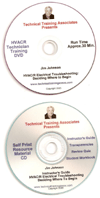With a mission to “give the customer what they need when they need it,” Dennis Leebow opened Majestic Steel USA’s operations in 1979. “(My father) worked for a family business prior to that called Baldwin Steel,” explains Todd Leebow, Majestic Steel’s president and CEO since 2012. “When Baldwin Steel was sold in the mid-1970s, he made a decision to relocate to Cleveland where my mother was from and start Majestic.” In five years, Majestic’s small customer base expanded into a lucrative business. “He was an innovator in the space, and he was really focused on building a unique business model,” says Leebow, who has set his own course for company growth via supply chain optimization. “I was fortunate at a young age that my father exposed us to the business,” he says, “from all aspects in terms of doing things in the plant, understanding the customers and understanding the product.” Not much has changed about the structure of steelmaking. However, with an increasingly volatile market, Leebow is poised to reinvent the supply side and make Majestic a leading partner in the domestic market.
From that early mission, how has that evolved since 1979?
When my father started the business, everything he did was about the customer and providing quality, speed and service, including his willingness to carry inventory when many were not willing to carry inventory that wasn’t pre-sold given the interest rate at that time. And so, he took a risk to carry that inventory, and that was really how the business got started and what the model was.
I would say today that model at its core has not changed, always thinking about the customer first, product integrity, service, speed, relationship and providing total coast. We like to differentiate price and total cost in terms of total cost being what the customer actually receives versus prices they are quoted.
After attending the University of Miami with a focus on business management and entrepreneurship, you originally went into film industry before joining the family business in 2007. But exposure always kept you a part of it. What do you think has changed about the company?
The steel industry and market has changed significantly when you look at the landscape of steelmaking, when you look at globalization, technology, the influence of data and the way that communication has changed.
No different from any industry or any business, you have to continue to innovate and evolve. So when I joined Majestic, I really focused on talent and technology in terms of bringing in fresh new talent to think about things differently while working closely with those who have experience to create a culture of experience and institutional knowledge. With fresh new ideas, and then making an investment in technology for internal efficiency, that then translates to value to the customer, as well as how we actually conduct business with the customer.
In today’s world, the market moves a lot faster. There’s a lot more volatility, and so understanding the market is an important part of our business. Whereas in the early days of Majestic, steel prices did not move nearly as frequently or as much as they do today.

Majestic Steel USA releases a statement about the novel coronavirus pandemic.
About how much steel does Majestic Steel move in a year?
We move about 500,000 tons, give or take, in the year based on demand and the market, and we ship our steel across the United States and some into Canada and Mexico, primarily focused on the U.S. market today. As far as the business, in terms of the markets that we serve, sheet metal was one of the original industries that Majestic served so that’s still very core to our business and a decent amount of our business. However, we are really diversified within the flat-rolled, space. Still, with a focus on coated products, we sell into all end markets that consume carbon flat-rolled carbon products. Other markets that we are selling into being construction, equipment manufacturers, agriculture, energy, transportation, military and defense, appliance and electrical. Then a unique part of our model is that we also sell into local service providers, supporting the local economy in terms of local wholesale and distribution.
As far as the market movement, I always say that Majestic is always long in steel, sometimes longer than others because we are in the steel business. The movement in steel pricing is something that directly impacts our business on a daily basis because we carry inventory. It’s our job to manage those movements to make sure that we are taking care of business and continuing to perform, but also making sure that we are taking care of our customers and being able to keep them educated on the market. Keep them competitive without compromising product integrity, service and the relationships that we have.
Speaking of market movement, how did the steel tariffs affect Majestic, and what is your stance on their use as a corrective action?
As far as the tariffs, I am a proponent of fair trade first and then free trade. In an ideal world, we would have free trade. However, from my experience at Majestic, in the last 20 years or so we’ve seen global steel production change significantly. With that change in production, we’ve seen the import and export market change significantly, too. Therefore, the trade environment has been impacted without necessarily having policy in place to make sure that that trade is done fairly.
And so, while I don’t think tariffs are a long-term solution, I do think that they were necessary to prevent the dumping that was happening in the U.S. The challenge is you can take different approaches. You can take anti-dumping countervailing duties. You can take circumvention cases. But then unfortunately you’re somewhat playing a Whac-A-Mole game, and you would plug one hole and another one would open up. So that’s where Section 232 came into play with a general tariff across all steel imports with some exceptions and exemptions.
I do think that the current trade environment needs to continue to evolve. However, I think that long-term tariffs are not the solution. Short-term they were necessary. I am a proponent of always supporting the domestic market first. I am also a proponent of, if the domestic market can’t support your product, then import is a viable option. Majestic has always prioritized, even in a tough trade environment, the domestic steel industry.
What differentiates steel suppliers? How do you recommend contractors choose the relationship?
I think that a lot of buyers believe that steel is steel is steel. Or galvanized is galvanized. The reality is that that’s not always the case. So I think when you are choosing a supplier, the first thing that you need to make sure is that supplier is providing you the product that you believe you are purchasing. SO product integrity is no. 1. In terms of making sure that the thickness, the coating and all the measurements match up with what your needs are as a buyer and what you’re inquiring.
And then?
After product integrity, then it goes to service, relationship and cost. So, making sure that they can service your needs, whether it’s lead time, whether its inventory availability, or whether it’s providing you the market intelligence and deal structure that works for you. In terms of speed, in the sheet metal space that matters because a lot of the buyers are buying for projects. And projects can stop and go. So you need a supplier that can be there for you to provide you with the material when you need it for that project without having to tie up the cash flow and carry the inventory and take on the risk of the market volatility.
And then I say cost because price is what you pay. Cost is what you actually receive. So making sure that from a cost perspective, your time is valuable. Making sure you don’t have material that you need to claim and that you can utilize all of the material. Making sure that material is what you purchased and then making sure that there is consistency in that relationship throughout a longer period of time. Weighing the long-term instead of short-term benefits. Sure, someone can come in to the market and maybe offer a lower price for a short term, but can they continuously service your business, month in, month out, and year over year?
In 2010, we relaunched our mission, our vision and our core values. Our vision statement is built around growth and innovation. We have a philosophy of being proactive versus reactive and taking things to the market versus waiting for the market to require those things. And so, with innovation being a part of our core DNA, we have taken the approach that, if you build it they will come. Building technology, building market research, building brand awareness has been a focus of the organization for quite a while now.
We’ve made a significant investment in innovation to be able to take that to our customers so that our customers are more educated on the market and product so that they know what they are getting. That’s been a challenge in the steel industry and in the sheet metal business. However, that is a challenge that we have embraced, and we see an opportunity to continue to innovate, to help those buyers understand what they are getting and why the market works the way that it works.
Why do you think Majestic Steel’s customers continue to choose Majestic over any other steel?
I would say consistency is the one word that sticks out and then the next would be convenience. Everything we do is about making it easy for the customer. The customer needs to focus on their job, and there’s a lot that goes into that. We don’t want them to have to worry about the steel supply side. We always have the inventory. We can provide the service they need in terms of product integrity and delivery, and hopefully they value that see why we are able to continue to support them through all market cycles, economic cycles and seasonality.
Last question, what are Majestic’s 2020 objectives in the HVAC and sheet metal space?
We are a growth-oriented company. HVAC is a core market for us to service, we are always looking to get better. Our plans are to be able to have better coverage across the United States, to be able to service customers and to be able to support customers with the product they need timely and cost effectively. Then to continue to innovate with customer facing technology to allow them to manage their buy more efficiently without replacing the human element and relationship. We believe that relationships matter, but enhancing that through the use of technology to create a more streamlined supply chain and better service.
A version of this article appeared in the April 2020 issue of SNIPS magazine.











